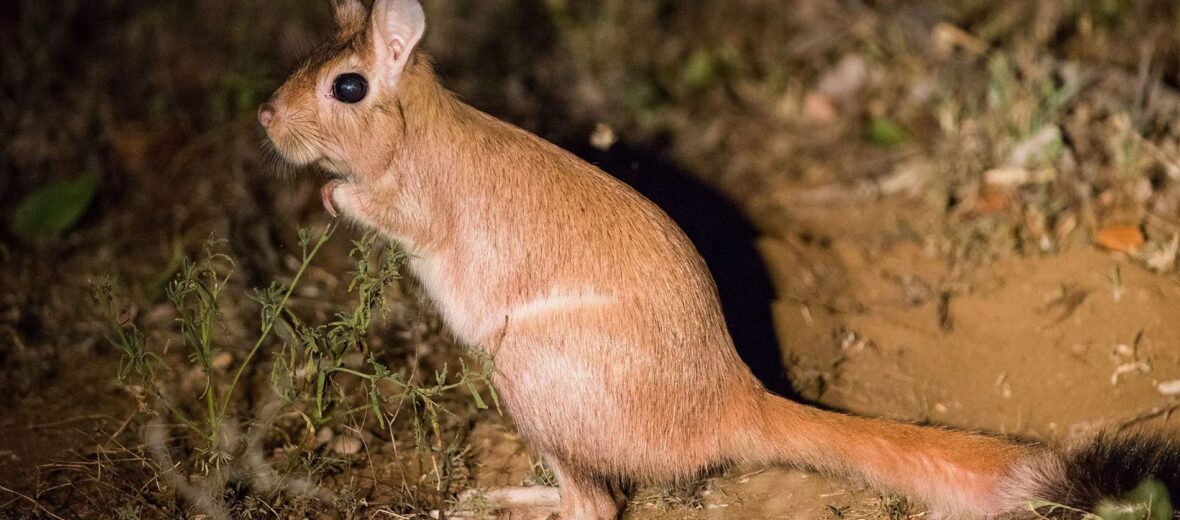
Looking like a rabbit and a kangaroo mated, we have the springhare. These critters live in the semiarid steppes and dry savannas of Kenya and Tanzania as well as in Southwestern Africa. They can travel up to 18 miles in search of food! Due to their stable numbers, springhares are listed as Least Concern by the IUCN.
First the Stats…
Scientific name: Pedetes capensis
Weight: Up to 5.6 lbs.
Length: Up to 17 inches
Lifespan: Up to 8 years
Now on to the Facts!
1.) Their diet mainly consists of grass, roots, leaves, wheat, and oats.
2.) Springhare’s predators include: Serval cats, wildcats, caracals, mongooses, genets, ratels, jackals, and large owls.
3.) Springhares breed throughout the year, giving birth to 1 baby.
4.) The springhare is nocturnal (active at night).
5.) These critters are also known as springhaas.
But wait, there’s more on the springhare!
6.) They have a flap of skin at the base of a their ear that they close to prevent dust from entering in their ears.
7.) Springhares are typically silent but do make a grunt-like sound when excited. When threatened, they will also bleat.
Did you know…?
A springhare can jump up to 6 feet!
8.) The claws of a springhare’s forelimbs are very sharp and used for digging burrows.
9.) Like many other rodents in Africa, springhares do not drink much standing water. They get sufficient moisture from rain, dew, and the plant matter they eat.
10.) Males fight for breeding rights and territory!
Now a Short Springhare Video!
Also, check out the Critter Science YouTube channel. Videos added frequently!
Want to suggest a critter for me to write about? Let me know here.




Leave a Reply